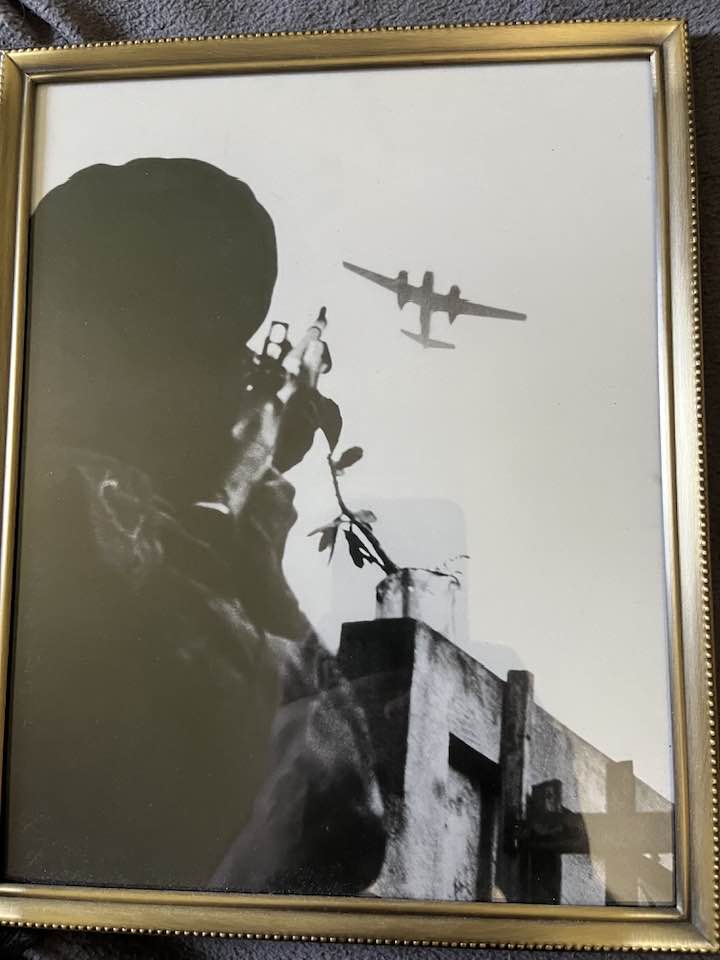Georgette Louise Meyer (March 14, 1918 – November 4, 1965), known as Dickey Chapelle (self-named after her favorite explorer, Admiral Richard Byrd), was an American photojournalist known for her work spanning from World War II to the Vietnam War.
While still in her twenties, posted with the Marines during World War II, she became one of the country’s first female war correspondents, covering the battles of Iwo Jima and Okinawa for National Geographic.
Chapelle covered the Hungarian revolt in 1956, The Lebanon Crisis in 1958, The Algerian War for Independence against France, The Cuban Revolution and the Vietnam War. In Algeria she travelled with the FLN rebels, in Cuba with Castro’s troops. She was in Vietnam and Laos as early as 1961, when US presence was still in the advisory phase. Chapelle became the first female reporter to win approval from the Pentagon to jump with American troops in Vietnam.
On the morning of November 4, 1965, she was killed by a land mine while on patrol with a Marine platoon, becoming the first war correspondent killed in the American war in Vietnam. Loved by the troops, her body was repatriated with a Marine honor guard and she was given a full Marine burial, also a first. She was the first American female reporter ever to be killed in action.
Here is a copy of one of her photos that I obtained from the Wisconsin Historical Society taken while covering the fighting in Cuba in 1958. The caption: Major Antonio Lusson, battalion commander for Castro during the fight for the town of LaMaya, fires on a strafing B-26 from Batista’s air force. Dickey Chapelle 1958.



